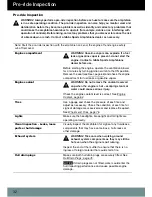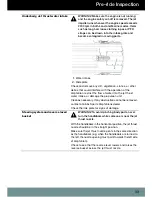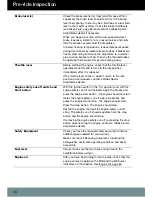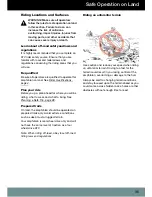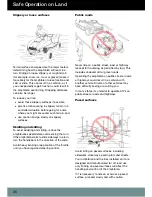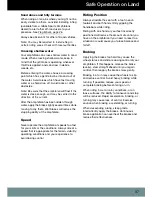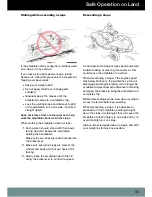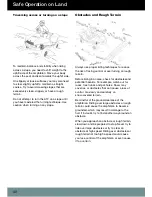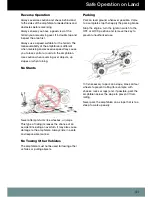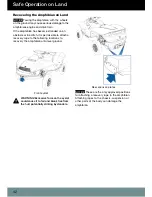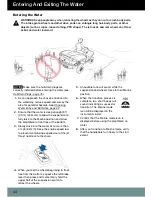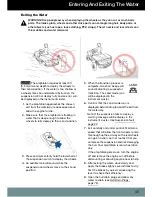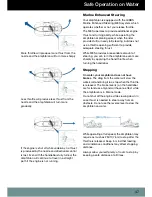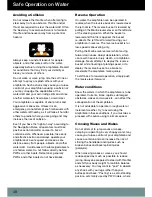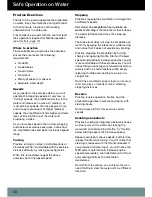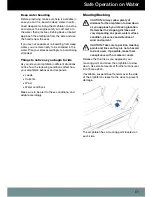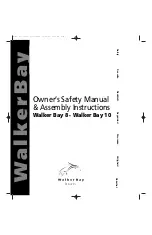
Safe Operation on Land
36
Safe Operation on Land
Slippery or loose surfaces
Terrain surface and speed are the major factors
determining how the amphibian will react in a
turn. Riding on loose, slippery or rough terrain
(for example, snow, ice, mud, or gravel) makes it
more likely for the amphibian to lose traction and
skid or slide. This can result in a collision, or, if
you unexpectedly regain traction, could result in
the amphibian overturning. Stopping distances
can also be longer.
To reduce your risk:
avoid these slippery surfaces if possible,
practice maneuvering in slippery terrain in a
controlled situation before going for a ride
where you might encounter such terrain, and
use caution and go slowly on slippery
surfaces.
Skidding and sliding
To avoid skidding and sliding, reduce the
amphibians speed before commencing the turn.
If the amphibian starts to slide sideways in a turn,
turn the handlebars in the direction of the slide.
Avoid heavy braking or application of the throttle
until you have regained steering control.
Public roads
Never ride on a public street, road or highway
(except for traversing as permitted by law). This
includes unpaved dirt or gravel roads.
Operating the amphibian on public streets, roads
or highways could result in a collision with
another vehicle. Drivers of other vehicles may
have difficulty seeing or avoiding you.
In many states it's unlawful to operate ATVs on
public streets, roads and highways.
Paved surfaces
Avoid riding on paved surfaces, including
sidewalks, driveways, parking lots and streets.
Your amphibian and the tires installed on it are
designed and manufactured for off-road use
only. Riding on paved surfaces will affect the
handling and control of the amphibian.
If it is necessary to ride on or across a paved
surface, proceed slowly and with caution.
Summary of Contents for quadski
Page 2: ......
Page 13: ...Safety Labels 9 Label 7 Europe Label 8 Label 9 Label 10 Label 11 Label 12 Label 13 ...
Page 14: ...Safety Labels 10 Safety Labels Label 14 Label 15 Label 16 ...
Page 15: ...Safety Labels 11 Label 17 Label 18 Label 19 Label 20 ...
Page 96: ......
Page 97: ......











